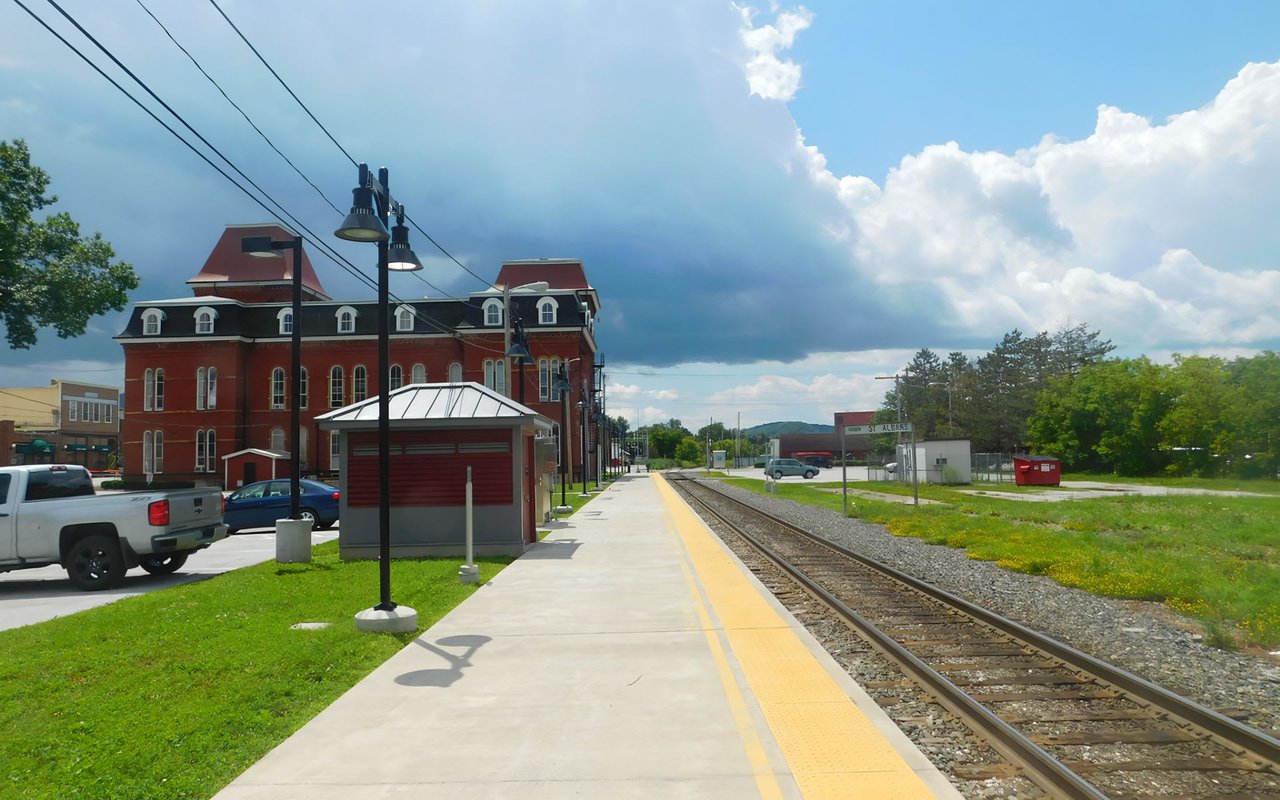St. Albans, Vt., beautifully marries history with modern living. Located in Franklin County, St. Albans is a quaint New England town known for its history, architecture, and New England lifestyle. It is just a short drive from the Canadian border, the city of Burlington, and the natural beauty of Lake Champlain.
The architectural landscape of St. Albans is particularly compelling, with an array of landmarks that reflect the town’s evolution over the centuries. From grand Victorian homes and Gothic Revival churches to neoclassical civic buildings and charming downtown storefronts, St. Albans architecture tells a story of a community that has grown and adapted while staying true to its roots. Each building, park, and public space speaks to a unique chapter in the town's history, making it a treasure trove for anyone interested in Vermont's architectural heritage.
Whether you are an architecture enthusiast, a history buff, or simply someone looking for a scenic getaway, St. Albans offers a delightful blend of historical depth and modern charm, making it a desirable place to explore and call home.
The St. Albans Museum
The
St. Albans Museum, located in a beautifully preserved 19th-century building, is a must-visit for those interested in St. Albans architecture and history. The museum occupies the former St. Albans Academy, a fine example of Victorian architecture. The building's intricate brickwork, tall windows, and decorative cornices exemplify the architectural details of that period. Visitors can explore exhibits showcasing the town's development over the years, including the pivotal role St. Albans played during the Civil War. The museum also highlights the influence of architecture in shaping the town's identity and offers guided tours to delve deeper into the building's historical significance.
St. Albans City Hall
St. Albans City Hall is a striking example of neoclassical architecture in the town. The building, constructed in the early 20th century, stands out with its grand columns and symmetrical facade, which are hallmarks of this architectural style. City Hall has long been central to community events and local governance. The interior features high ceilings, large windows, and well-preserved woodwork that reflect the craftsmanship of the era. Visitors are welcome to explore the grounds and admire the building's historical significance, making it a notable landmark for those interested in St. Albans architecture.
Church Street Historic District
Church Street Historic District offers some of the most well-preserved examples of St. Albans architecture. This area is known for its Victorian-era homes, which boast a range of architectural styles, including Queen Anne, Italianate, and Gothic Revival. Walking along Church Street, visitors can appreciate the ornate facades, decorative gables, and stained glass windows characteristic of these styles. The district is a testament to the architectural diversity of St. Albans and remains a favorite for both architecture enthusiasts and casual visitors.
St. Albans Free Library
The
St. Albans Free Library, housed in a historic building on Maiden Lane, is another key example of St. Albans architecture. Constructed in the early 1900s, this library combines Beaux-Arts and Colonial Revival styles, evident in its symmetrical design, grand entrance, and elaborate interior details. The library has served the community for over a century, providing a quiet and inspiring space for learning and gathering. Its historic architecture adds to its charm, making it a popular spot for residents and tourists alike to explore and enjoy.
St. Luke's Episcopal Church
St. Luke's Episcopal Church is an iconic piece of St. Albans architecture representing the Gothic Revival style. Completed in the late 19th century, the church's design includes pointed arches, stained glass windows, and a prominent bell tower. The interior of St. Luke's is equally impressive, with wooden beams, detailed carvings, and beautiful stained glass that creates a serene and reflective atmosphere. The church remains an active place of worship and a symbol of the town's rich architectural heritage.
Taylor Park
While
Taylor Park is primarily known for its green space, it also features notable examples of St. Albans architecture, particularly the park's surrounding buildings. The park itself, established in the 19th century, is framed by several historic structures that showcase a mix of architectural styles, including Federal, Greek Revival, and Italianate. Visitors can stroll through the park while admiring these beautifully preserved buildings, each contributing to the town's architectural tapestry. Taylor Park remains a central gathering place, balancing natural beauty with historic charm.
The Railroad Depot Complex
St. Albans' Railroad Depot Complex is a cornerstone of the town's history and a fine example of industrial St. Albans architecture. The complex, which dates back to the 19th century, played a significant role in the town's development as a transportation hub. The buildings within the depot feature a utilitarian design with brick facades, large arched windows, and robust ironwork. Today, the complex houses the Northwestern Vermont Model Railroad Association and other local businesses. It is a vibrant part of St. Albans' community life and an essential stop for visitors exploring the town's architectural and historical landmarks.
First Congregational Church
The
First Congregational Church is one of the oldest examples of St. Albans architecture. Built in the early 19th century, this church features classic New England architectural elements such as a white clapboard exterior, a tall steeple, and a welcoming portico. The church has been a fixture in the community for generations, hosting numerous social and cultural events. Its simple yet elegant design is emblematic of the architectural style prevalent during its construction and offers a glimpse into the early history of St. Albans.
The St. Albans Armory
The St. Albans Armory, a structure steeped in local military history, is another vital piece of St. Albans architecture. The building’s robust brickwork, narrow windows, and strong geometric lines reflect its original purpose as a military installation. Over the years, it has been adapted for various community uses while retaining its historical character. Today, the Armory stands as a symbol of the town's commitment to preserving its history, serving as a venue for events and local gatherings while showcasing a unique aspect of St. Albans' architectural legacy.
About Tamithy Howrigan
When it comes to navigating the real estate market in St. Albans, Tamithy Howrigan is the trusted professional you want by your side. With over a decade of experience and a passion for helping clients achieve their real estate dreams, Tamithy leads a dynamic team of dedicated agents committed to supporting one another and delivering exceptional results. As a native Vermonter with deep community roots and strong ties to Canada, Tamithy combines local expertise with a genuine commitment to clients and the community.
Beyond real estate, Tamithy actively engages with her community as a TV host of The American Dream, a member of the Board of Trustees for the Franklin County Regional Chamber of Commerce, and a dedicated St. Albans Rotarian. Ready to work with a real estate expert who values integrity and personalized service?
Reach out to Tamithy Howrigan and her team today.












